I’m going to share with you the strange story of one of the greatest healers who has ever lived.
Through this story, you’ll discover how you can make and use three of his most powerful remedies immediately: one for severe pain, one for life-threatening infections, and one that will greatly improve your quality of life from this day forth. Often where modern medication fails.
I’ve seen people whose doctors have given them no more than six months to live, who, following this healer’s treatment, are still alive and well more than 20 years later.
I know all this because I was there, and this man was my grandfather.
Angry Bear Paw – Cotyledon Tomentosa
This first remedy is what my grandfather used to treat wounded and dying American soldiers on the battlefield.
You’ll probably want to keep some close at hand, especially if you’re over 40.
My grandfather’s story began during the Great Depression, when he became an orphan. Luckily, he was adopted by a Native American woman from whom he learned his first medicinal plants and remedies.
Before long, my grandfather could name thousands of edible and medicinal weeds. He knew where to find them, when to harvest them, and how to turn them into powerful remedies.
By the beginning of WWII, he was already known as a gifted healer in the community, but it was during the bloody battle for Periers, when his division converted a French church into a makeshift hospital that his reputation soared.
That’s because when the surgeons ran out of morphine it was my grandfather who gave the hundreds of wounded soldiers relief. He would rush from soldier to soldier and put a small vial of a powerful extract he made himself, called Angry Bear Paw, to their lips, and in a short time, the loud groans and cries subsided. I’m sure you’ve seen it in your backyard too:
You see, every June my grandfather would gather the leaves of this very common plant, which is called wild lettuce, and use it to make Angry Bear Paw.
How To Make Angry Bear Paw:
First, my grandfather would grind and boil the leaves until he got a brown substance like this:
Then he’d strain it and leave the liquid on low heat for another 2 to 3 hours until it became gluey and dark:
Sometimes it would take almost 4-5 hours to do it. But it was well worth it.
You see, the Comanche natives called this powerful extract Angry Bear Paw because the warriors who drank it before battle could endure and keep on fighting despite heavy wounds, just like an angry mother bear protecting her young.
It’s super effective.
Log Man’s Mending Fur – Usnea Barbata
The second remedy I’ll show you was known as Log Man’s Mending Fur (Brandy), and it brought me back from the brink of death.
It might even do the same for you one day.
You see, I had checked in for a routine lower back surgery, but in the process, I ended up catching a deadly antibiotic-resistant bacterium: Staphylococcus Aureus.
Over 500,000 Americans get this bacterial infection each year, some after simple procedures or short hospitals stays, and 50,000 of them end up paying the ultimate price.
And although the doctors tried many synthetic antibiotics, this deadly infection wasn’t backing down. If anything, my condition was getting worse, to the point of having uncontrollable muscle seizures.
The problem was that until they found the right antibiotic, the bacteria could have killed me.
All my life I said to myself that in the face of death, I will not flinch.
What this experience taught me is that good health has no price, and often we don’t realize it until it is too late.
Luckily, my grandfather had rushed to the hospital with his worn-out notebook, a bottle of vodka, and a bag of the plant below, which was popularly called Log Man’s Mending Fur or Old Man’s Beard in some parts of America.
I’m sure you’ve seen it too, hanging down from the dead trunks and tree branches.
How To Use Log Man’s Mending Fur:
This plant contains usnic acid, which is probably the only substance found in nature that is known to fight gram-negative bacteria like Staphylococcus Aureus better than most antibiotics. It was still a gamble, but it was worth trying.
My grandfather ground 1 ounce of the plant and placed it in a jar.
You need to add 5 ounces of vodka then leave it on low heat for 2 hours. After you let it rest for another day, you should have your own medicine jar of Log Man’s Mending Fur.
It was called that way because during the frontier period, whenever a log man cut himself accidentally, this is what he put on the wound to stop the infection.
In my case, my grandfather poured 10 drops in a glass of water and let me drink it. After just one week of taking his medicine, I got better and left the hospital.
Red Beak Powder – Crataegus
The third remedy that I’ll show you was one that I learned 3 days after he passed on, and it was called Red Beak Powder.
I discovered it from a 72-year-old woman from Texas who told me what my grandfather did for her many years before. She’d been suffering from high blood pressure, a condition that is becoming very common, especially among seniors today.
However, her medication was keeping her blood pressure and cholesterol under control, but it didn’t cure her. She had to take the drugs every day for the rest of her life.
Mary told me that as the days passed, she was getting tired a lot easier without doing any more work than usual.
After a few months, her drugs had an effect she never anticipated. They caused life-threatening liver damage and brought her to the edge of cirrhosis.
So please read this part very carefully because if you are taking drugs regularly, you are exhausting your liver.
When you feel tired without any reason, it’s usually the liver trying to tell you that it needs some rest.
The liver was never intended to process the chemicals inside drugs. This is why most people who have been taking pills for a long time are drained of energy, which ought to be there to fight the disease.
The doctors told Mary that she needed to cut the medication altogether.
So, her impossible choice was between dying from liver damage or risking a heart attack or stroke due to high blood pressure.
That’s when she heard about my grandfather, who prescribed her a little-known natural plaque remover that will melt away the deadly cholesterol deposits from your arteries, and less plaque, equals lower blood pressure—simple as that.
How To Make Red Beak Powder:
 This powerful remedy is made from the berries of the Hawthorn tree.
This powerful remedy is made from the berries of the Hawthorn tree.
My grandfather would gather them in late October.
Then you need to remove the seeds because they contain a very small amount of amygdalin, which can be dangerous in large doses.
After that, you must add water and blend the mixture.
Place the mix on a tray, and let it dry at 200°F with the oven door open. Or use a dehydrator if you have one. You’ll need to leave them for only 8 to 10 hours.
The powder can then be put in capsules or mixed with water and taken orally for two months to completely cleanse your blood vessels.
With my grandfather’s remedy, Mary stopped taking her blood pressure medication, and in a few months, her liver regenerated.
And there you have it.
Three of the most powerful remedies you could ever need. Enough to see you through almost any crisis in any case. From one of the most powerful healers I have ever known. Who was still teaching, well into his nineties, in full health and fitness. Even as younger generations had begun to deteriorate.
And yet, while they say wisdom is a virtue, I see little of that around today.
Instead, we’ve made things needlessly complicated, assuming more complex equals better, when really the reverse is true.
Many of our modern medicines are based on our ancestors’ ancient knowledge, only with higher profit margins, drug patents, healthy insurance and more thrown in.
We’ve forgotten what the real purpose of medicine is: to heal people.
That’s why, when my grandfather passed, and generations of collected experience went with him, I was saddened. This man had more wisdom in his little finger than I see anywhere else today…
Yet despite his immense knowledge, he always stayed humble … never forgetting the generations who came before, lived, died, and sacrificed to pass on these lessons. Particularly his adopted mother.
Quoting Newton, he often told me:
“If I have seen further than others, it is by standing upon the shoulders of giants.”
And now I’m sharing this knowledge with you…
Plus, if you want to read more, check out this video I made.
God bless,
Claude Davis





























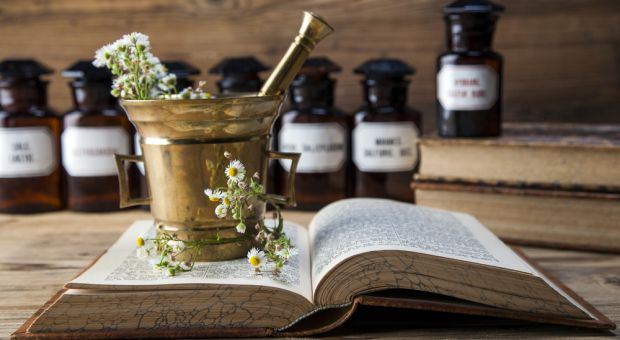

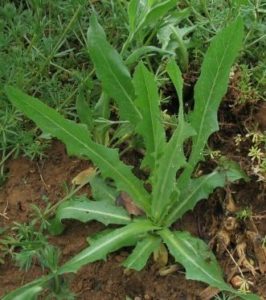
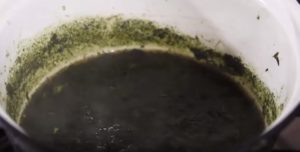
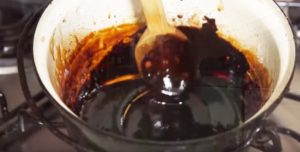
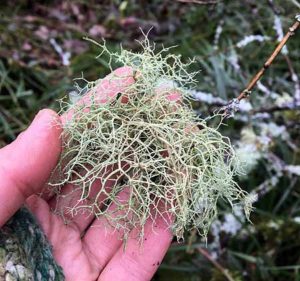






















































That sounds great but there are no exact amounts to take. Just like modern medicine you have to take a certain amount.
Without going through a lab, it is impossible to tell how much of an active chemical is in a plant. Growing conditions, soil, and the time of year harvested make a difference. Even the same plant may have more of an active chemical in one branch than another. This is why a specific dose cannot be given. Many modern medications are made from plants – taken to a lab and the desired chemical is isolated, measured, and made into consistent doses.
Without a lab, you do the best that you can by starting small and gradually building to what is therapeutic based on the results that you observe. Always take the smallest effective dose of any medication or herb. In a situation where there is no access to pharmaceuticals, plants/ herbs are the next best thing.
Is there a book of remedies that you could recommend?
Hello Bonita.
Thank you for your interest!
If you click on an image inside the article or on the image banner at the end of the article, you will access our recommendations regarding books with remedies.
If you need any further information, do not hesitate to contact us.
Alex, from Survivopedia 🙂
Claude Davis do you post the book The Lost Boo of Remedies to Australia.
I bought some dried hawthorne berries. It did not specify whether the seeds had been removed. I crushed one, but did not see a seed in it, but then again I do not know what their seeds look like.
What color seed would I be looking for? If it gets crushed when I crush the dried berry, I’m hoping that the color variation inside will tell me if it had a seed in it.
Thank you.
Carol
I’d like to know the botanical name please
Hello Kerry.
We have updated the article and now you can find the botanical name by each title.
Alex, from Survivopedia 🙂
Usnea and Hawthorn berrry have been used by my family for many years. Hawthorn doesn’t grow where live and my cousin who used to send us dried berries is gone now. I believe Hawthorn berries are available from herb supply companies. Usnea is found here but rare. The wild lettuce is common but I’ve never tried cooking it down as directed here. That I will have to try.
Thanks
These remedies really do peek my interest for a social collapse situation..
I do not have enough land for food production , so
I’m devoting my small garden to stock remedies.
You state –
Place the mix on a tray, and let it dry at 200°F with the oven door open. Or use a dehydrator if you have one. You’ll need to leave them for only 8 to 10 hours.
When you say leave them for 8 to 10 hours ??
Do you mean “in the oven on heat for 8 to 10 hours?” Or after using the oven ?
Is this process explained in the book of remedies along with suggested starting doses ?
Thank you
Hello and thank you for reading us!
The Lost Book Of Remedies has dedicated chapters on how to harvest, dry and prepare herbs for storage.
Also, this info could come in handy with your small garden:
https://www.survivopedia.com/how-to-use-small-spaces-for-your-container-garden/
Let us know if we can help you with further info.
Stay safe!
Survivopedia team.
Hello again.
Thank you Alex for your reply.
With survivopedia articles and comments from members,
I’m glad to say my prepping has changed from a muddled slightly paranoid hobby to a peaceful comprehensive enjoyable lifestyle.
Prepping or “self sufficiency” continues to interest me more and more.
I say self sufficiency because “prepping” can easily be misunderstood as a term for militia purposes.
I can testify to this after recent official investigations of myself, my activities and unwarranted observations of my internet use. (Hello to the watchers/ liberti ce est non)
Would you believe they confiscated my catapult ,trump pin badges, confederate flag , barbecue bricks and much more , inferring that I’m right wing or a potential terrorist because of my prepping interest.
When in fact I’m ex-military and will always serve my country and fellow man for safety and liberty.
I congratulate you and I’m grateful for all the information from survivopedia and it’s members (respect to clergylady).
Apologies if this is a little unrelated to growing plants.
But it makes my blood boil to be oppressed by the country I served and have my liberty or any political view restricted.
GOD BLESS you all
Save yourself
And don’t trust the government
I have been doing a lot of studying and working for self sufficiency since I retired from the Army some years ago. I have Two of the plants mentioned in this article growing on my place here somewhat in abundance. But I have a question specifically regarding Log Man’s Mending fur. I’m in the process of doing a lot of clean up and clearing of deadfall wood around my property and I’m seeing a large amount of it in dead branches and wood on the forest floor and I wondered if the fur will maintain its medicinal properties if I collect and dry it in a sealed container until needed for use. I can’t have the ground clutter in my trees because it would prevent me from other undertakings and projects, but I also don’t want to waste a valuable resource by destroying the plant itself with the dead wood. Any advice would be appreciated.
To Jefferson, I have to say I share your worries and concerns as well. I’m US Army (Retired) and I, like you, have zero trust for government at this point. We swore the same oath to defend our constitution against all enemies, both foreign and domestic. I don’t consider myself as having been released from that oath simply because I’m no longer in uniform. In short, I’ll consider myself released from it when I take my last breath. Until then, we’ll have to keep our heads on a swivel and stay sharp. As Thomas Paine wrote, “Government in its best form is but a necessary evil. In its worst form, and unbearable tyrrany which must be shaken off… I’m sure I needn’t have to explain to you what we have been seeing these last several years regarding those who wield power in our nation’s high offices. I stand shoulder to shoulder with you.
Are there two kinds of Hawthorn? The Hawthorn here in the north west has black berries.
These are very seedy, about the size of a large pea and have a sleight apple taste.
Pheasant and other birds love them.
What is the shelf live of these 3 lifesaving medications and best way to long term storage ? Thanks
Not trying to be rude but the botanical name for wild lettuce is incorrect. The plant family for wild lettuce is lactuca, I believe all of them are medically active. The most powerful variety is believed to be lactuca virosa. Cotyledon tomentosa is a South American plant known as bear’s paw.